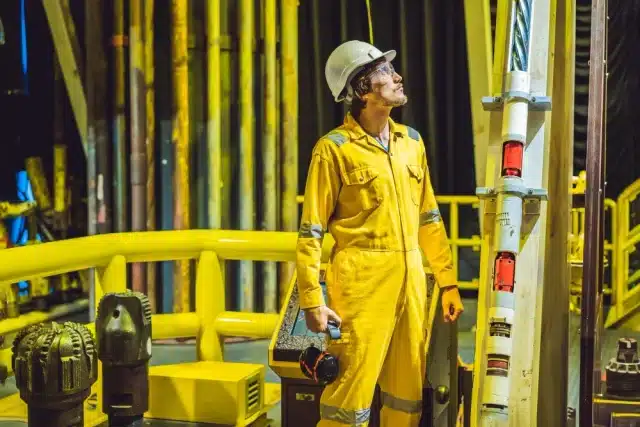The oil and gas sector is among the most dangerous industries, with employees facing danger from explosions, toxic gas poisoning, and equipment failure from high-pressure equipment. Adequate health and safety training is important in safeguarding employees and compliance with regulations. The article below describes the most important health and safety training for oil and gas employees and why it is so important.
Why Health and Safety Training is so Important in the Oil and Gas Industry
The oil and gas industry operates in risky conditions, including offshore platforms, refineries, and drilling rigs. Workers are inclined to handle explosive materials, high-pressure equipment, and heavy equipment, and thus accidents are likely to occur. Proper training reduces:
- Workplace injuries and accidents
- Legal issues of health and safety compliance
- Employee confidence and efficiency
- Down time due to safety-related incidents
- Guarantee a spill- and leak-free hazardous working condition
Daily Health and Safety Training Courses
1. Fire and Explosion Protection Training
Oil and gas factories handle combustible material, and as such fire safety is paramount. The training covers:
- Methods of avoiding fires
- Emergency protocol
- Means of operation of fire extinguishing and suppression
- Fire or explosion evacuation
2. Confined Space Entry Training
Employees are likely to work in confined areas like storage tanks and pipelines with inadequate ventilation. This training includes:
- Recognition of hazards of working in tight spaces
- Procedures for safe entry and safe exit
- Utilizing gas detectors in searching for oxygen
- Emergency rescue plan
3. Working at Heights Training
Oil and gas workers like working at heights on platforms, scaffolds, and rigs, but one of the main causes of injuries on site is falling. This course teaches:
- Proper fall equipment and harness use.
- Proper ladder and scaffolding use.
- Emergency rescue procedures.
4. Hazardous Materials Handling Training
Workers work with poisonous, corrosive, and flammable chemicals that expose them to health hazards. Training entails:
- Safe transportation and handling of hazardous materials
- Personal Protective Equipment (PPE) use
- Reading Material Safety Data Sheets (MSDS)
- Spill response and containment procedures
5. First Aid and Emergency Response Training
Accidents may occur at any time and therefore the personnel should be in a position to respond on impulse. This training involves:
- Basics of first aid and CPR
- First aid for fracture, cuts, and burns
- Medical emergencies such as gas inhalation
- Communication during emergency response
6. Environmental Safety and Oil Spill Training
Oil spill will lead to complete devastation of the environment and financial losses. Through this training, workers can:
- Gain spill prevention
- Develop containment and cleanup processes
- Comply with environmental safety standards
7. Gas Detection and Respiratory Protective Training
Toxic gases like hydrogen sulfide (H₂S) and methane exist in the oil and gas industry. Exposure is fatal. Training includes:
- Gas leak detection using detectors
- Use and maintenance of respiratory protective equipment
- Evacuation in gas leak conditions in the event of emergency
8. Safety Training in Machinery and Equipment
Heavy machines like drilling rigs, cranes, and pumps are dangerous to operate without proper training. Such training includes:
- Safe operation of machines
- Lockout/Tag out (LOTO) techniques to avoid unexpected starts
- Scheduled maintenance and checks
Advantages of Investing in Health and Safety Training
1. Compliance with Laws
Oil and gas corporations are bound by law to comply with stringent safety legislation to avoid legal action. Training familiarizes employees well and also makes them compliant with HSE (Health and Safety Executive) procedures and company policies.
2. Reduced Workplace Accidents
Quality training minimizes workplace accidents, avoiding lost time and associated medical expenses.
3. Improved Worker Productivity
Self-assured workers who have faith in their ability perform better and are more productive.
4. Protection of Company Reputation
Oil and gas catastrophes make headlines and destroy the reputation of a company. Safety training guarantees an excellent safety record.
5. Environmental Conservation
Companies avoid oil spills, gas leaks, and any kind of environmental hazard with safety precautions.
Safety and health training is optional but obligatory in the oil and gas sector. Through the apt skills and apt knowledge transferred to the employees, organizations are permitted to reduce danger, meet with requirements, and increase workplace protection. Investing dollars on the appropriate safety training conserves the workers as well as makes business cost-effective. Contact Jason Rowley Training Ltd for more information.

Speaks from heart, always too passionate and driven by emotions. Spins the words with kindness & sharpness, intriguing your ever-inscrutable minds.




